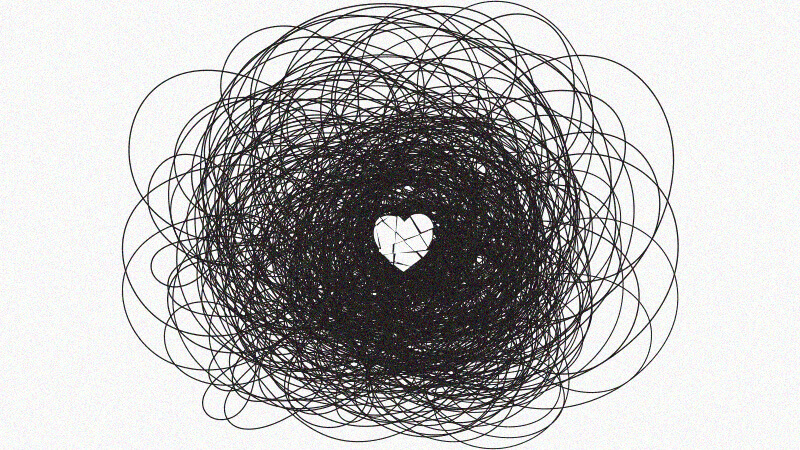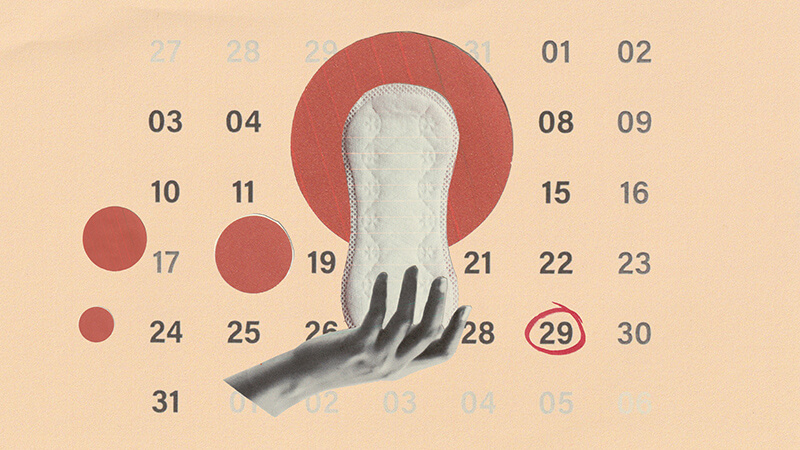From The #HotAnxiousGirl To #TheSadGirlAesthetic: The Risks Of Romanticising Mental Illness On Social Media
In the depths of Instagram’s aesthetically curated #SadGirl rabbit hole lives a black and white archive photo of Joni Mitchell, superimposed with the text ‘One Joni Mitchell song away from a mental breakdown’. The image is one of many posted by accounts such as the ironically titled @ihatekatebush, which overlays images of pop-culture icons with flippant, tongue-in-cheek remarks about mental illness. While @ihatekatebush favours folksy, eternally pining female musicians, @femcelpilled666 gravitates towards unhinged, strikingly attractive fictional characters. One of the account’s memes sees Angelina Jolie in Girl Interrupted – a recurring motif of the trend – superimposed with the text ‘“I want to date other people.” Babe, but what about the voices in my head? There are at least five people inside.’
Over the past decade, social media has been awash with mental health content. Some accounts are applaudably informative, taking advantage of society’s increasingly fluent pop psychology lexicon, others stigmatise, trivialise, and – in women’s case – idealise, psychological disorders. After all, the media and entertainment industries have long held a contentious relationship with women’s mental illness: from the hysterical madwoman trope rearing its head as horror fodder (Jane Eyre) and sexual fodder (Basic Instinct), to the tabloids’ sexist coverage of celebrity meltdowns.
The approach on TikTok can be equally thorny. Last month, Priya Patel, the proprietor of TikTok account @littlemiss_adhd_, uploaded a three-minute video admonishing fellow creators for their portrayal of the condition as little more than an of-the-moment quirk. “Do you think it’s trendy living in a world that isn’t built for the way that you are?” she poses. Punctuated with a rallying cry for more accurate representation of the condition, the video garnered over 437,000 likes.
Patel was referring to the Janus-faced ADHD content on the app, which oscillates between the cataloguing of symptoms and skits enacting the disorder’s common traits, particularly in women. As it stands, the hashtag #ADHD boasts over 21 billion views. Patel, a mental health secondary services worker and ADHD patient, worries that the trend could lead to self-pathologising, misinformation, and the invalidation of women’s experiences. “I think ADHD can be made a bit ‘airy fairy’ when it comes to women. Like it’s a quirky, endearing thing to have. That we daydream and are a bit ditsy, when it’s not like that at all,” she explains.
On Twitter, the #HotAnxiousGirl hashtag – which Twitter has branded ‘sensitive content’ – unabashedly equates mental illness with physical attractiveness (in a world where the term ‘psycho’ has come to epitomise the antithesis of male attraction, perhaps it makes sense that women are espousing the idea of being hot and mentally unstable). Meanwhile, tweets pandering to the sad girl microtrend include ‘Just a cute sad girl with her messy bangs’ (@maryamBaba_) and ‘Wellness tip: ditch sad girl winter by embracing clinically depressed girl perpetuity’ (@futurepoppop). As The Atlantic’s Kaitlyn Tiffany put it, “Through their tweets, they identify as overthinkers and dreamers and hot people, and they profess melancholy and romantic longing.”
In social media’s formative years, the idealisation of mental health content was more explicit. The dark, unmonitored corners of Tumblr were inundated with the #ProAna (pro-anorexia) hashtag, and Pinterest and Instagram were cited as a cause of British teenager Molly Russell’s suicide.
Still, many would argue that social media is increasingly better monitored, and more balanced in its portrayal of mental health. Instagram is flooded with pastel infographics doling out facts about, and advice on, mental illness, and can be credited with providing a sense of community to sufferers – many of whom have nowhere else to turn – particularly at a time when mental health services are under acute strain. (Patel’s local clinic recently shut down due to lack of funding, leaving “absolute chaos” in its wake.) They are also adept at supplying some (often much-needed) levity. “At the end of the day, I do think a laugh, rightly timed, has liberatory potential. It certainly makes you feel less alone,” says Sushrut Yadav, the mind behind @ihatekatebush.
But Yadav is cognisant of the situation’s delicacy and advises finding a middle ground. “As long as we also cultivate a virtual space to talk about these issues with appropriate seriousness, it shouldn’t be harmful to – once in a while – find relatability within these larger-than-life figures,” she says. Despite her impassioned video, Patel commends TikTok’s mental health content. “There are some brilliant creators on TikTok… [It] has been incredible for raising awareness. I’m just sitting and thinking, If I didn’t have that app, I would not have my diagnosis now. I would still be struggling.”
Whether or not social media’s benefits outweigh its foibles is an unanswerable question, and likely a futile one, as it continues to colonise our brain space with impunity. What we can do is continue to push for the stringent monitoring of content, particularly in the nascent, ever-expanding metaverse, report potentially hazardous content, and exercise caution while scrolling.
Juno Kelly is an editor and journalist focused on internet culture, social commentary, and profiles. Her work has appeared in The Cut, The Fence, LOVE Magazine, and more




